by Walt Anderson
Many of us look forward to the cheery songs of birds to remind us that spring is moving steadily toward summer, when most birds breed. However, here in Arizona, the arrival of White-crowned Sparrows in fall brings their melodies back to us after an absence of several months. From now until they leave in April and May, we can hear their lovely choruses, sometimes even while snow is on the ground. The songs always lift my spirits.
White-crowned Sparrows have been called “the best-studied songbird,” which reflects their broad geographic distribution and their general abundance where we can observe them, even in cities and suburbs where there is sufficient cover and food. They are common yard visitors and, for a sparrow, easy enough to identify.
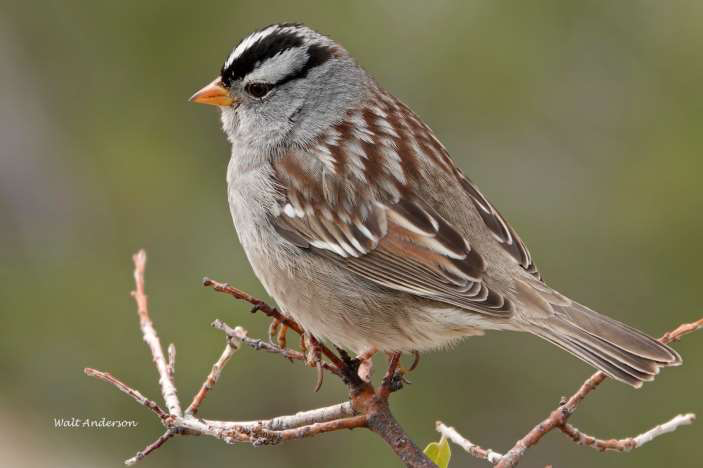
Well, the adults are easy to identify with their zebra-striped heads, but why are they called “White-crowned” when the crown is distinctly black and white?

And the immature birds aren’t even black or white on their crowns. In fact, when these were first described, people thought they belonged to a different species, and even today, plenty of beginners mistake them for a Chipping Sparrow or a Rufous-crowned Sparrow or simply an LBJ (little brown job). When they are in flocks with adult birds, some people think they must be females, but in fact, sexes are essentially alike in either immature or adult plumages.
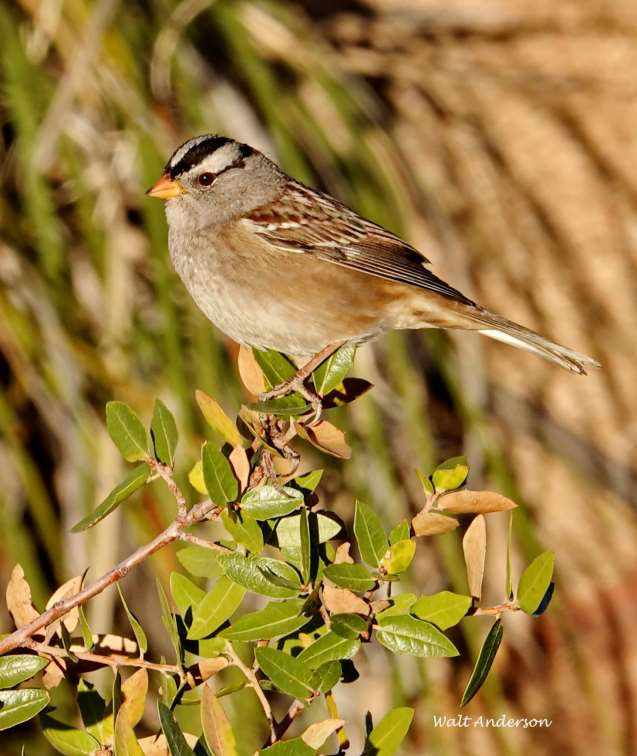
White-crowned Sparrows breed across arctic North America and down the Rocky Mountains and Pacific coast. A few breed in Arizona’s San Francisco Peaks near Flagstaff and probably on Mt. Baldy in the White Mountains. These tiny populations are especially vulnerable to winking out with climate change. Wintering birds occur in most US states except the northern tier from eastern Montana to the Atlantic.

In Arizona, we occasionally get stray White-throated Sparrows (this form also has white-and-black head stripes like the White-crowned but also yellow lores and a more clearly delineated white throat patch). This is the common member of genus Zonotrichia in the eastern US, where it breeds from northern Minnesota to New York and Maine, wintering south of there. It’s song (“Oh, Sweet Canada, Canada, Canada,” also described as “Old Sam Peabody, Peabody, Peabody”) is distinctly different from that of the White-crowned, though the latter varies regionally. There are birders who distinguish related Zonotrichias by their call notes: “pink” for the White-crowned, “chink” for the White-throated, and “wink” for the Harris’s Sparrow. Good luck on that! Actually, posture is a better field mark, as the White-crowned tends to be very perky and upright.
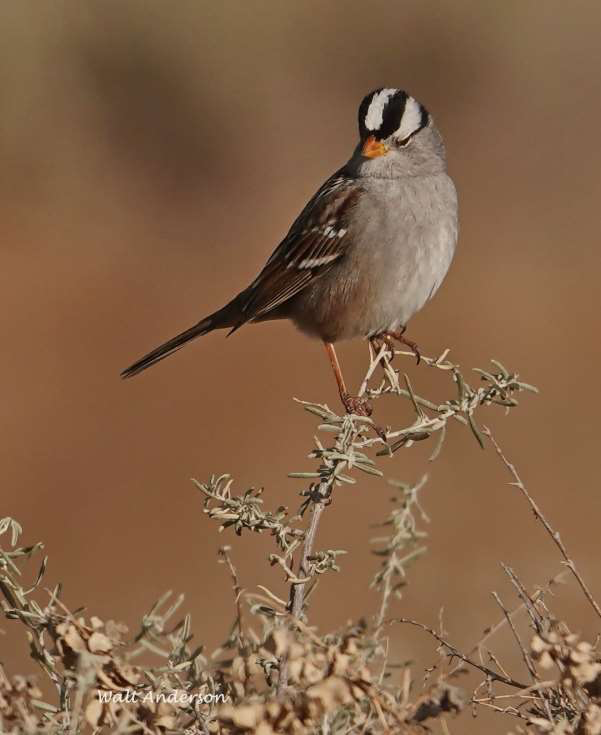
Look how upright this White-crowned is compared to the slouching White-throated in the previous image. White-crowns are sister species with (that is, most closely related to) Golden-crowned Sparrows of the Pacific coast, but a few stray Golden-crowns do turn up in Arizona now and then. They split from their common ancestor about 50,000 years ago. Long before that, the ancestors of these two western species diverged from the White-throated Sparrow some 750,000 years ago!
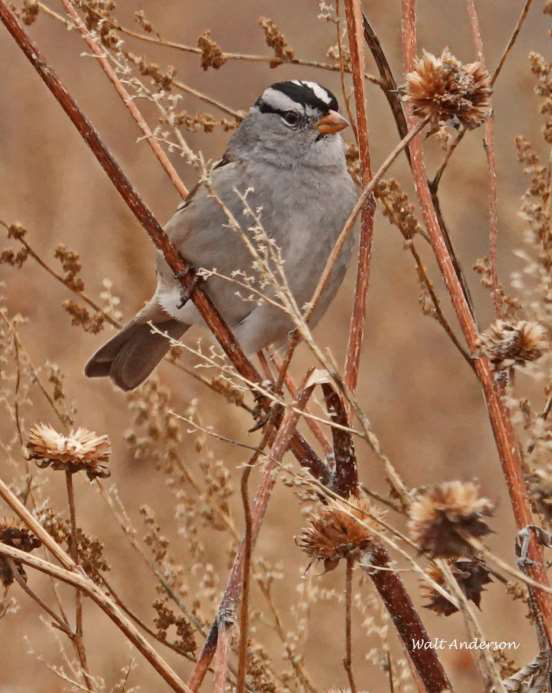
Wintering White-crowned Sparrows are mainly seed-eaters, though they do take green grass, tree buds, and some fruits, as well as insects if they can find them. As spring comes on, they increase the proportion of insects eaten, fattening up before northward migration, and in summer, they feed more on insects than seeds. They have high mortality the first year (70% mortality from the nestling stage until their first spring). The young have a couple-month “sensitive period” in which they learn the songs of males in their natal neighborhoods. They practice the songs rather quietly until developing the full song of an adult. Perhaps that’s why this species sings in the winter, tuning their vocal powers, before heading north to set up territory, which they defend by song and threat postures.

Snowy days in winter can really challenge them, as most seeds are hidden beneath the blanket of snow, and they have to eat more to maintain their body heat (though they are well-insulated, so lack of food is more critical than temperature). Flocking helps, as there are more eyes to watch for Cooper’s Hawks, Sharp-shined Hawks, and other predators. Thus they can devote more time to feeding with head down than if they were alone.
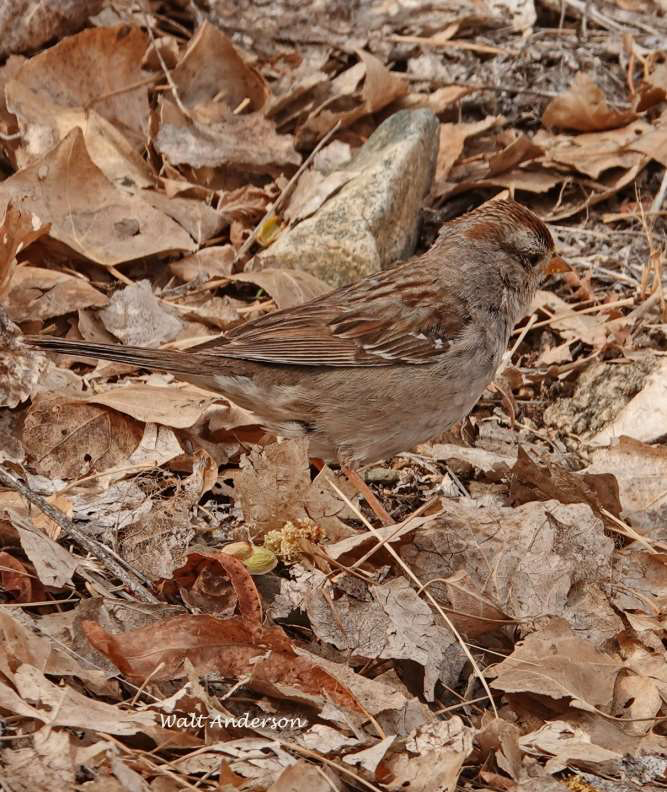
White-crowned Sparrows tend to stay close to cover while feeding. They hop about while foraging, and to dig through leaves for hidden tidbits, they do the “double-foot scratch.” I would definitely fall on my beak if I tried that!
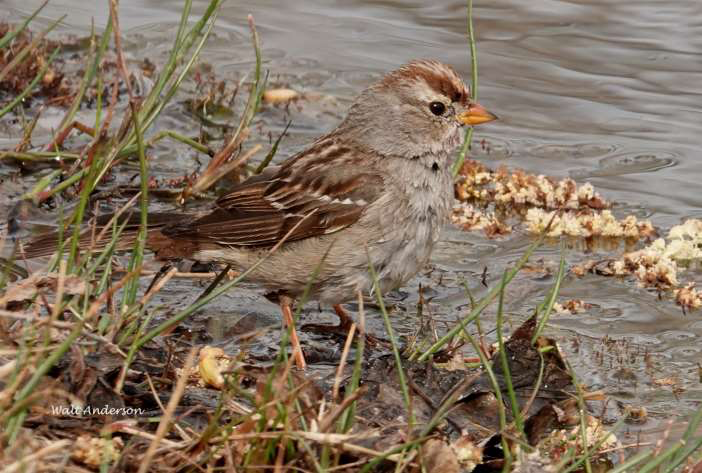
Unlike the desert-adapted Black-throated Sparrow, White-crowns need to drink frequently and also enjoy a good bath.

I love this shot of a drinking immature White-crown because its reflection allows me to see the pebbles beneath the creek surface.
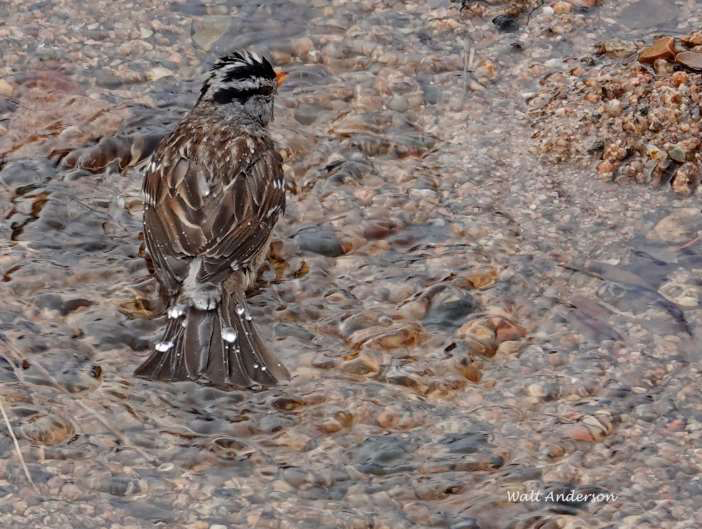
An adult White-crown luxuriating in its bath.
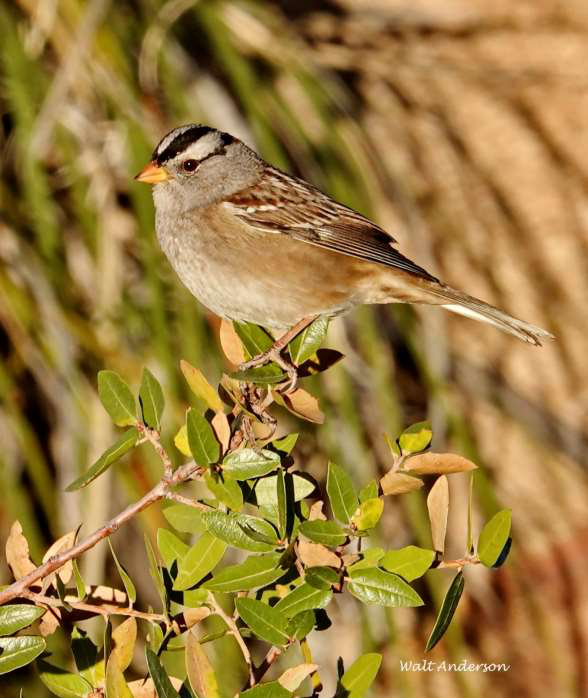
Bird populations in North America have dropped dramatically in recent years, and climate change is already having negative effects on many species. Even common species are predicted to be strongly affected. Our activities do more harm than we usually realize, so we need to learn about our impacts and act responsibly to minimize damage to the millions of species with which we share this remarkable planet. Sometimes we think that our personal actions are insignificant, but there are so many of us that it all adds up to enormous cumulative damage. Also, our only hope for tackling the really big systemic changes that are needed is to elect representatives who get it. We need to put the future of the planet ahead of self if we have the means to do so.

Really lovely piece on a lovely winter bird that we enjoy at our winter-home feeder area and water dish in Oro Valley. I especially liked the last paragraph.
We currently have a Pilliated woodpecker drinking daily from our water basin in our woods here in Oregon. It is SO strange to see a Pilliated down off a conifer! Such a strange body shape when on the ground. All shoulders, bent over, and tail planted.
We have a very large flock (maybe more than 50) of these sweet crowned jewels devouring seeds in our feeders in Door County, Wisconsin, for the padt week. I am assuming it is a migrating flock heading further north. Am I correct?